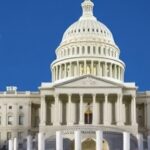New York, NY – Hitting the gym after a few drinks or powering through a workout on zero sleep might feel like a badge of dedication, but a top NASM-certified Fitness trainer is sounding the alarm: these habits could be derailing your progress and risking serious injury. Sarah Jenkins, a renowned personal trainer with over a decade of experience, has outlined the seven worst times to exercise, emphasizing how timing impacts Fitness, recovery, and overall health.
- Post-Alcohol Workouts: Dehydration and Muscle Damage in Disguise
- Sleep-Starved Sessions: How Skimping on Rest Crushes Exercise Gains
- Heavy Meal Mayhem: Gut Woes from Exercising Too Soon After Eating
- Dehydration, Sickness, and Extreme Weather: Sneaky Saboteurs of Safe Exercise
- Mental Fatigue and Stress Overload: When Your Brain Says No to Exercise
- Revamping Routines: Expert Strategies for Peak Exercise Timing and Recovery
In a viral social media post that’s garnered over 500,000 views this week, Jenkins shared her expert insights, backed by science and real client stories. “Many people think pushing through fatigue or alcohol buzz builds resilience, but it actually hinders muscle recovery and spikes injury risk,” Jenkins told reporters. With exercise culture booming post-pandemic—U.S. gym memberships up 15% according to the International Health, Racquet & Sportsclub Association (IHRSA)—her warnings come at a critical time for Fitness enthusiasts.
From post-alcohol sessions to skipping rest days, Jenkins’ list highlights common pitfalls that sabotage gains. A 2023 study in the Journal of Clinical Sleep Medicine found that sleep deprivation alone increases cortisol levels by 30%, impairing workout effectiveness. Here’s why avoiding these timing traps is essential for sustainable fitness.
Post-Alcohol Workouts: Dehydration and Muscle Damage in Disguise
Topping Jenkins’ list is exercising after consuming alcohol. Even moderate drinking the night before can wreak havoc. “Alcohol acts as a diuretic, leading to severe dehydration that reduces performance by up to 11%, per a Sports Medicine review,” Jenkins explains. It also disrupts protein synthesis, the process key to muscle building and recovery.
Consider the science: A University of North Carolina study showed that post-exercise alcohol intake cuts muscle repair by 37%. Clients of Jenkins have reported dizzy spells and nausea during hungover HIIT sessions. “One athlete I trained blacked out mid-squat after a weekend binge—never again,” she recounts. Instead, wait at least 24-48 hours for full rehydration and liver recovery. Hydrate with electrolytes and prioritize nutrient-dense meals to counteract alcohol‘s effects.
For weekend warriors, this means rescheduling Sunday spin classes. Jenkins advises: “Your body needs time to process toxins; treat exercise as fuel, not punishment.”
Sleep-Starved Sessions: How Skimping on Rest Crushes Exercise Gains
Number two on the danger list: working out without adequate sleep. In today’s 24/7 hustle, 35% of Americans get less than seven hours nightly, per CDC data, directly clashing with optimal fitness routines. “Sleep is when growth hormone peaks, aiding recovery. Skip it, and you’re in a catabolic state,” Jenkins warns.
Research from the Sleep Research Society links chronic sleep deprivation to 20-30% drops in strength output and higher injury rates. Jenkins shares a case: “A client pushed through 4 hours of sleep for deadlifts—result? A pulled hamstring and two weeks off.” Poor sleep elevates inflammation, slows glycogen replenishment, and fogs decision-making, turning safe lifts risky.
To fix this, aim for 7-9 hours. Jenkins recommends pre-bed routines like dim lights and no screens, plus naps for shift workers. “Prioritize sleep over extra sets; it’s the ultimate performance enhancer.”
Heavy Meal Mayhem: Gut Woes from Exercising Too Soon After Eating
Right after a heavy meal ranks third, as blood flow diverts from muscles to digestion, causing cramps and sluggishness. “A big pasta lunch before weights? You’re setting up for bloating and reduced power,” says Jenkins. A Journal of the International Society of Sports Nutrition study confirms: exercising within 90 minutes post-meal drops VO2 max by 15%.
This is especially risky for endurance athletes. Jenkins notes, “Runners I’ve coached vomited mid-mile after carb-loading too close to race time.” Fats and fibers slow gastric emptying, amplifying discomfort. Wait 2-3 hours for large meals, 30-60 for snacks. Opt for light, balanced pre-workout fuel like bananas with nut butter for steady energy without distress.
In a fitness world obsessed with meal timing, Jenkins stresses listening to your body: “Digestion first, domination second.”
Dehydration, Sickness, and Extreme Weather: Sneaky Saboteurs of Safe Exercise
Jenkins’ next trio of no-gos—dehydrated states, acute illness, and extreme temperatures—often fly under the radar but pack a punch. Dehydration, even at 2% body weight loss, slashes endurance by 10-20%, according to the American College of Sports Medicine. “Thirst is too late; pre-hydrate,” urges Jenkins.
Working out sick diverts immunity to muscles, prolonging recovery. A British Journal of Sports Medicine analysis found feverish exercisers face 50% longer illness duration. Extreme heat spikes heatstroke risk—fatalities rose 20% in U.S. summers per NOAA—while cold stiffens muscles, hiking tear chances.
Real-world example: Jenkins halted a client’s outdoor bootcamp during a 95°F heatwave. “Hyperthermia hits fast; indoor alternatives save lives.” Monitor urine color, skip if congested, and layer for weather shifts.
Mental Fatigue and Stress Overload: When Your Brain Says No to Exercise
Rounding out the seven: exercising amid high mental stress or burnout. Chronic stress floods the body with cortisol, catabolizing muscle for energy. “Overworked execs I train burn out faster without mental recovery,” Jenkins observes. A 2022 Psychological Science study ties anxiety to 25% poorer exercise adherence and form breakdowns.
Post-deadline gym trips? They amplify exhaustion. Jenkins advises active recovery like yoga or walks. “Tune into mental cues; forced fitness breeds resentment and injury.”
Revamping Routines: Expert Strategies for Peak Exercise Timing and Recovery
Jenkins’ revelations challenge the ‘no pain, no gain’ mantra, urging smarter scheduling. Track cycles with apps like MyFitnessPal or WHOOP for personalized windows. A 2024 Fitness Industry Report predicts timing-optimized programs will dominate, boosting retention by 40%.
“Integrate rest as actively as reps,” Jenkins concludes. Pair workouts with 48-hour recovery windows, fuel properly, and monitor biometrics. For long-term wins, consult pros—NASM-certified trainers like Jenkins offer tailored plans. As fitness evolves, timing isn’t just logistics; it’s the edge between thriving and crashing. Fitness fans, recalibrate now for unbreakable progress.
- Quick Tips: Hydrate hourly during sessions, sleep 8 hours pre-big lifts, eat 2 hours prior.
- Stats Spotlight: Proper timing cuts injury by 30% (NSCA data).
With summer fitness peaks ahead, Jenkins’ advice could prevent ER visits and unlock plateaus. Stay informed, train smart.









